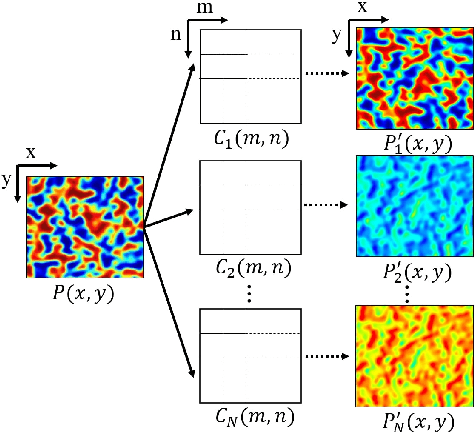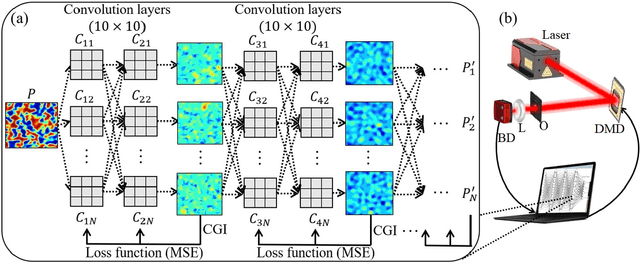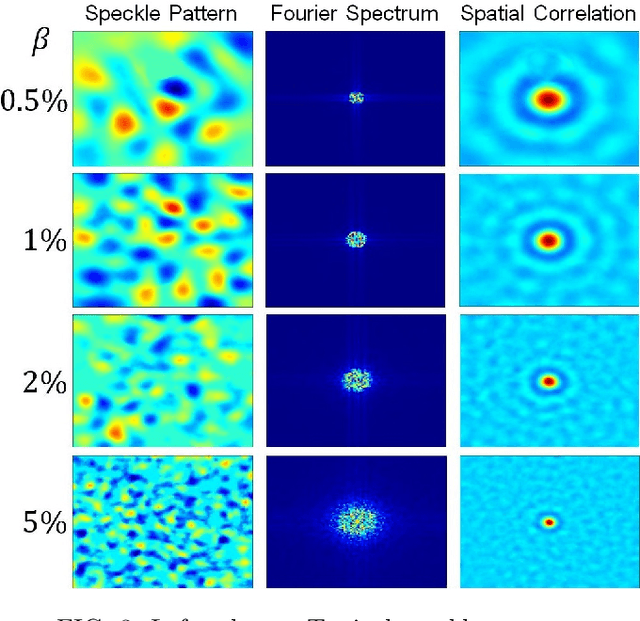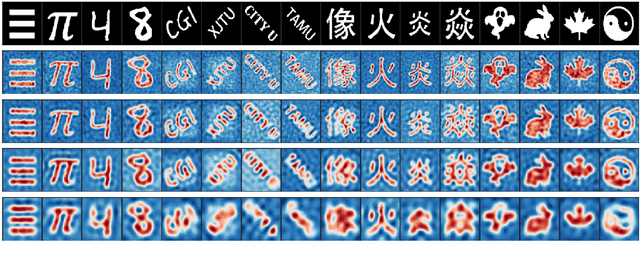Wenhan Ren
Ghost translation
Sep 29, 2022



Abstract:Artificial intelligence has recently been widely used in computational imaging. The deep neural network (DNN) improves the signal-to-noise ratio of the retrieved images, whose quality is otherwise corrupted due to the low sampling ratio or noisy environments. This work proposes a new computational imaging scheme based on the sequence transduction mechanism with the transformer network. The simulation database assists the network in achieving signal translation ability. The experimental single-pixel detector's signal will be `translated' into a 2D image in an end-to-end manner. High-quality images with no background noise can be retrieved at a sampling ratio as low as 2%. The illumination patterns can be either well-designed speckle patterns for sub-Nyquist imaging or random speckle patterns. Moreover, our method is robust to noise interference. This translation mechanism opens a new direction for DNN-assisted ghost imaging and can be used in various computational imaging scenarios.
Deep-learned speckle pattern and its application to ghost imaging
Dec 28, 2021



Abstract:In this paper, we present a method for speckle pattern design using deep learning. The speckle patterns possess unique features after experiencing convolutions in Speckle-Net, our well-designed framework for speckle pattern generation. We then apply our method to the computational ghost imaging system. The standard deep learning-assisted ghost imaging methods use the network to recognize the reconstructed objects or imaging algorithms. In contrast, this innovative application optimizes the illuminating speckle patterns via Speckle-Net with specific sampling ratios. Our method, therefore, outperforms the other techniques for ghost imaging, particularly its ability to retrieve high-quality images with extremely low sampling ratios. It opens a new route towards nontrivial speckle generation by referring to a standard loss function on specified objectives with the modified deep neural network. It also has great potential for applications in the fields of dynamic speckle illumination microscopy, structured illumination microscopy, x-ray imaging, photo-acoustic imaging, and optical lattices.
 Add to Chrome
Add to Chrome Add to Firefox
Add to Firefox Add to Edge
Add to Edge